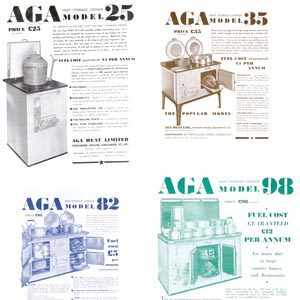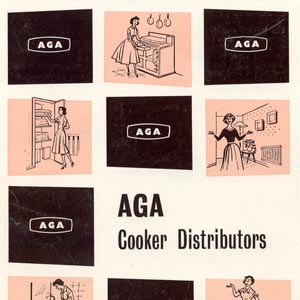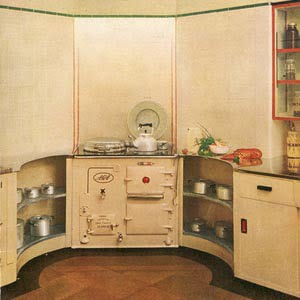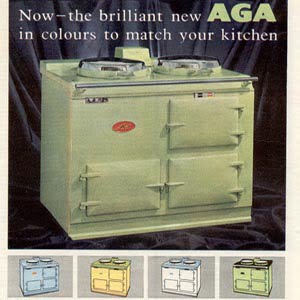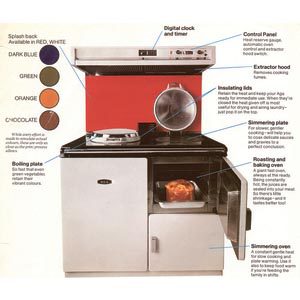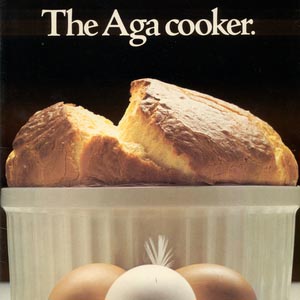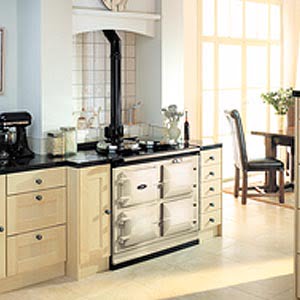A Century of History
A Century of History
For a century AGA has been bringing life to the kitchen. The company has deep roots in Shropshire – the birthplace of industry – and it is where AGA cookers are still made today.
1922 – The Beginning
The AGA cooker wasn’t conceived in a research facility. It was dreamed up in a kitchen. Its inventor, Dr Gustaf Dalén, was a Swedish physicist blinded in a terrible accident. In 1922 he was convalescing at home when he realised his wife was using a range that was dangerous, dirty and exceptionally time consuming. He wanted to create a cooker that was instead clean, economical to run, easy to use and which produced great food with the minimum fuss. In doing so, he invented a cooker that changed the lives of cooks the world over.
The AGA was an immediate success and came to Britain in 1929. It has been at home ever since.

1930s – 1940s
It was during the 1930s that Britain’s love affair with the AGA really took hold. A key player in this success was David Ogilvy, who went on to found the leading advertising agency, Ogilvy & Mather. While at AGA he wrote The Theory and Practice of Selling an AGA Cooker, which has been described by Fortune magazine as ‘the finest instruction manual ever written’. Amongst his gems of advice, Ogilvy suggests that a successful salesman combine ‘the tenacity of a bulldog with the manners of a spaniel’.
During the war years the AGA played its part. The British government placed orders for AGA cookers for munitions works, communal feeding centres and hospitals. Demand rose steeply from families too and the waiting period for a new cooker was more than six months.
In 1947 the company began manufacturing its cookers in Shropshire, where they are still made today.

1950s to 1970s – new colours
For 34 years, the AGA had been available only in cream, but in 1956 all that changed. The introduction of the new AGA De Luxe models in pale blue, pale green, grey and white proved hugely popular with AGA lovers. It was around the same time that the famous AGA chrome-plated lid domes were introduced.
The 1960s saw the first iconic black AGA lozenge logo, which is still used today. But the changes introduced during this time weren’t just cosmetic – solid fuel was falling out of fashion as people wanted cleaner, more convenient energy sources. This led to the launch of oil and gas-fired AGA cookers. The 1970s saw the launch of further new colours, including black, which still proves hugely popular today.

1980s – the first electric AGA cooker
In 1985, AGA launched a landmark model – the 2-oven EC2, the first electric AGA range cooker, followed two years later by the 4-oven EC4. These new models retained all the traditional features for which AGA cookers were known and loved but needed no flue.
The AGA celebrated its 50th birthday early in the 1980s and in 1981 its status as a national institution was recognised when Prime Minister Margaret Thatcher paid a visit. She was shown a brand new AGA in blue. “It’s a lovely colour,” she said, a smile hinting that she thought the choice of shade hinted at a political allegiance. “It was red yesterday!” countered the company chairman to much laughter.
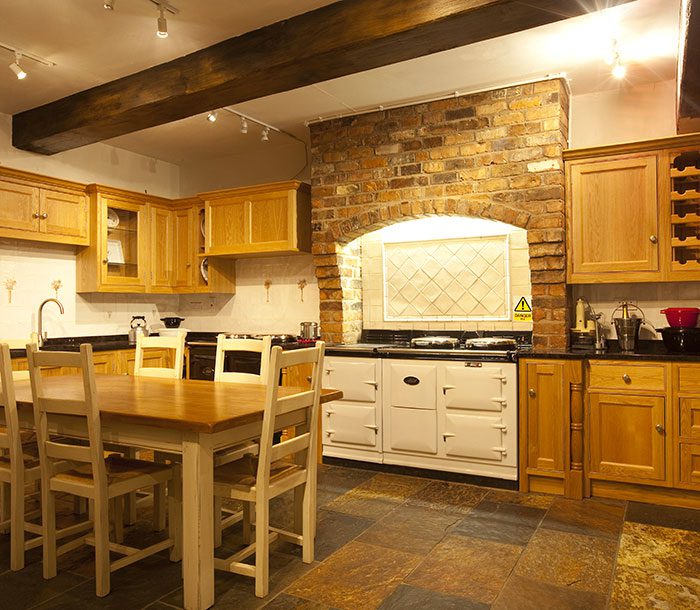
1990s – the AGA Book by Mary Berry
Publication of The AGA Book established Mary Berry as the definitive AGA writer, with the Mail on Sunday describing her as being “to AGA what Pavarotti is to opera”. It was also during this decade that the term ‘AGA saga’ was coined by novelist Terence Blacker to describe a genre of literature dealing with British country life.
The AGA module – a conventional electric cooker with quintessentially AGA styling – was launched in 1996. Designed to fit to the left-hand side of AGA cookers, it provided extra cooking capacity and was brilliant when the main AGA was switched off for servicing.

2000s – the new millenium
In 2003, the 3-oven AGA cooker was launched. With the same footprint as occupied by the 2-oven model for the previous 80 years, it was an engineering breakthrough and a major step forward, adding a baking oven for the first time along with the additional capacity.
The introduction of the 13-amp electric model in 2004 – complete with standard household plug – changed the AGA family forever. It needed no flue and could be fitted almost anywhere in the kitchen.

Today
In 2018 and 2019 the AGA eR3 Series collection was launched. Cookers in this range feature a state-of-the-art induction hob and many other innovative features, including the addition of a 90L fan oven, and range in size from 60cm to 170cm.
Autumn 2019 also saw the launch of the electric AGA 7 Series models. The R7 Series, available in 100cm and 150cm, is designed to have the ovens on all the time giving cosy warmth into your kitchen, whilst having 4 temperature settings, including an economy setting, to save energy and fuel costs.
The eR7 Series features an easy-to-use touch-screen control panel with 5 heat settings for the roasting oven and 4 settings for the baking oven. Each oven and hotplate is independently controlled enabling the user to control heat output into the kitchen and the amount of energy used.

